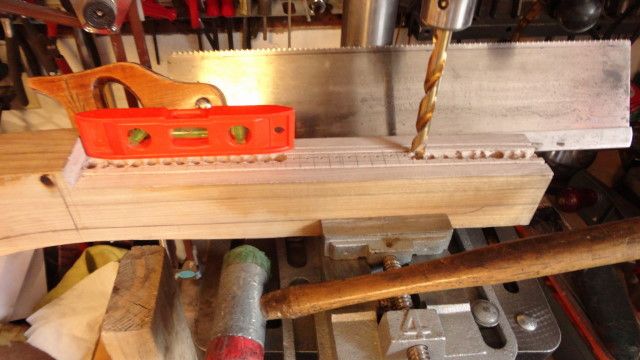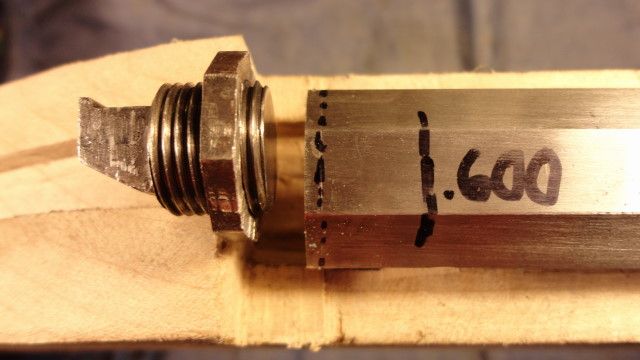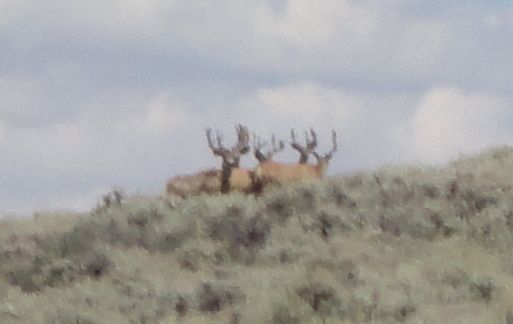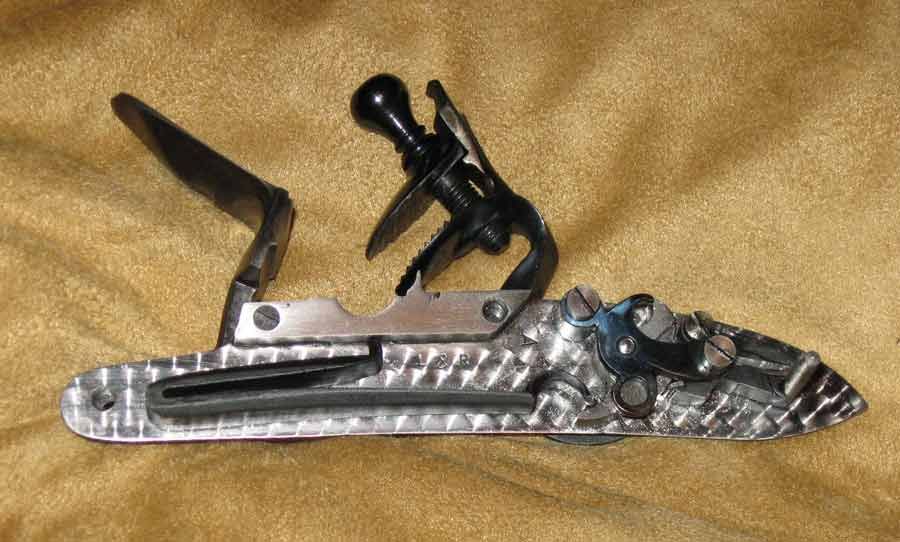Herb
54 Cal.
- Joined
- Mar 19, 2004
- Messages
- 1,954
- Reaction score
- 456
Some of the people I shoot with here get their knickers in a knot when they see a caplock, wanting everyone to shoot flintlocks only. I have flintlocks, but they are too long and heavy for me to shoot well off-hand. So I built a .54 English Sporting Rifle fullstock flint that weighed 7.5 pounds, but I couldn't shoot it well off-hand. Next I copied my .54 Bridger Hawken (which I shoot wonderfully well) in a .58 flint rifle, and I will see how well I shoot it. The Bridger has a 31" 1 1/8" barrel and weighs 11 pounds, but the flint copy has a 32" 1 1/8 x 1" tapered barrel and weighs 9 3/4 pounds. Both Green River barrels.
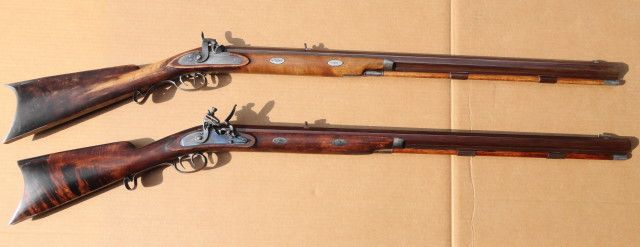
Length of pull is 13.25" on the Bridger and 12.25" on the flintlock. I like short stocks. The stain is Laurel Mountain Forge Lancaster Maple and the finish is 4 coats of Track's Original Oil.
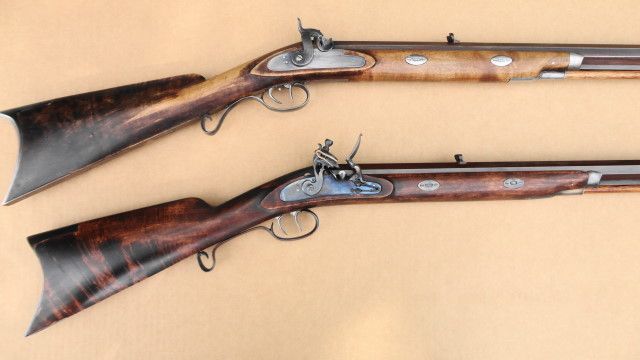
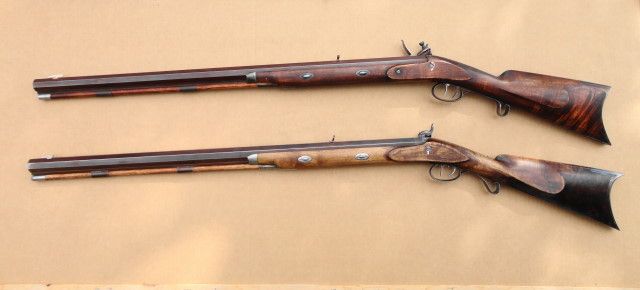
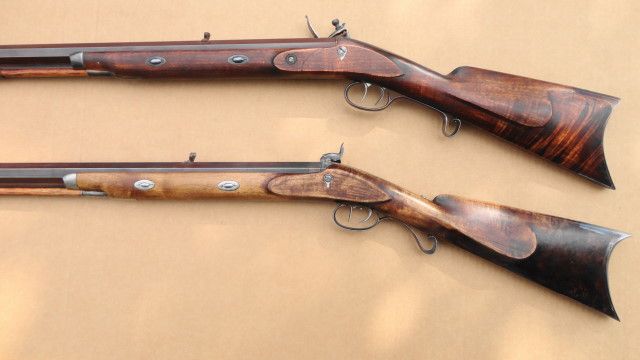
I heat blued all the parts with a propane torch and Mapps gas but browned the barrel with 12 coats of Laurel Mountain Forge Barrel Brown and Degreaser.
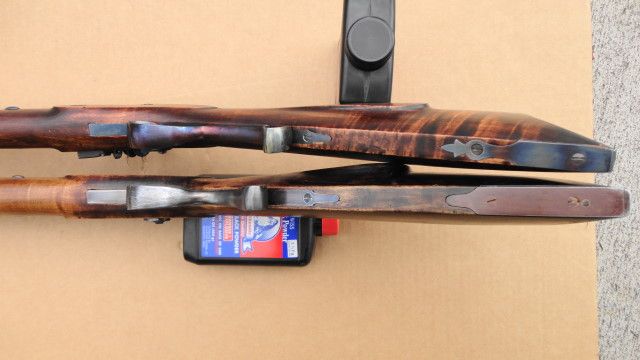
Here are two groups, working on the sights, at 50 yards from rest. Shots 1-5 are with .562 balls, .014 (crushed) linen patching and 90 grains of Goex 2F at 1529 fps. No wiping between shots or groups (ran out of cleaning patches). Shots 6-10 are with 100 grains of Olde Eynsford 1 1/2F and some reject cast balls, which seemed to mike .577. Don't know how I did that with a .570 mold. Velocity averaged 1611 fps. I'll start with 50 grains of Goex 2F for off-hand competition. (You can hit Control and + on your keyboard to enlarge the picture).
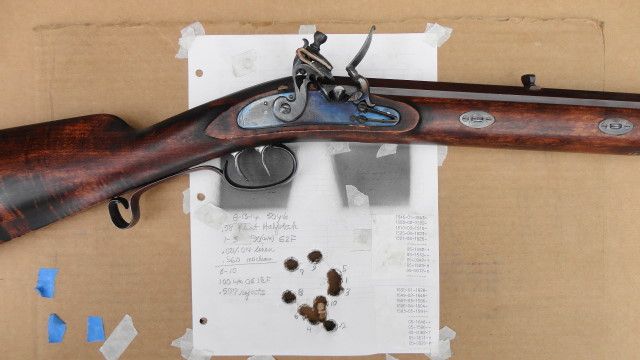

Length of pull is 13.25" on the Bridger and 12.25" on the flintlock. I like short stocks. The stain is Laurel Mountain Forge Lancaster Maple and the finish is 4 coats of Track's Original Oil.



I heat blued all the parts with a propane torch and Mapps gas but browned the barrel with 12 coats of Laurel Mountain Forge Barrel Brown and Degreaser.

Here are two groups, working on the sights, at 50 yards from rest. Shots 1-5 are with .562 balls, .014 (crushed) linen patching and 90 grains of Goex 2F at 1529 fps. No wiping between shots or groups (ran out of cleaning patches). Shots 6-10 are with 100 grains of Olde Eynsford 1 1/2F and some reject cast balls, which seemed to mike .577. Don't know how I did that with a .570 mold. Velocity averaged 1611 fps. I'll start with 50 grains of Goex 2F for off-hand competition. (You can hit Control and + on your keyboard to enlarge the picture).





